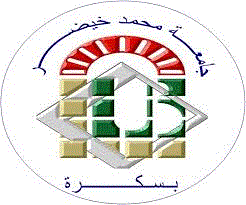| Titre : | Culture constructive traditionnelle : défis actuels Cas de l’architecture de terre à Timimoun |
| Auteurs : | Haroune Ben Charif, Auteur ; Azeddine Belakehal, Directeur de thèse |
| Support: | Mémoire magistere |
| Editeur : | Biskra [Algerie] : Université Mohamed Khider, 2018 |
| Langues: | Français |
| Mots-clés: | Technique de construction ; Savoir-faire ; Architecture de terre ; Culture constructive ; Gourara ; Timimoun ; Architecture vernaculaire. Construction technique ; Know-how ; Earthen architecture ; Constructive culture ; Vernacular architecture ; Timimoun. |
| Résumé : |
L’homme a toujours pu survivre, plutôt vivre, même dans les contextes climatiques les plus rudes. Dans le Sahara occidental, ce désert mythique, des Ksour, qui témoignent du génie d’acclimatation de l’homme avec l’environnement, ont représenté son environnement bâti. Ce riche patrimoine qui reflète toute l’histoire d’une adaptation native, semble, de nos jours, mal exploité à cause des changements idéologiques conséquents à l’industrialisation. Mais, en réaction, il est fortement question d’un retour de la recherche dans un savoir qui a vécu et muri pendant des centaines de siècles, dans une culture qui n’a connu aucune barrière avec la nature. Dans ce sens, des questions prennent forme : comment peut-on comprendre la technique constructive traditionnelle en vue de son exploitation rationnelle ? Peut-on construire un espace contemporain avec des techniques traditionnelles, ou bien intégrer des fonctions contemporaines dans des édifices construits avec des techniques traditionnelles ? Finalement et le plus important, peut-on construire en terre en cette période dominée par la construction moderne ? La première partie de la recherche aide à comprendre la vision actuelle des habitants de Timimoun envers leur architecture traditionnelle en terre. A travers l’observation des associations accordées à cette architecture, nous essayons de constituer l’image par laquelle se profilent les défis actuels de l’architecture de terre pour la population de cette ville. Dans la deuxième partie, nous exposons la technique constructive traditionnelle à Timimoun et explorons le savoir-faire ancestral qui contribue fortement au fondement de l’architecture vernaculaire Gourari. Notre but est la documentation de ces techniques et la constitution d’une base de données en vue de leur réutilisation rationnelle dans toute opération de restauration ou de réhabilitation. Même que les avantages du matériau terre pourront très probablement profiter à un nouveau type de construction dans le Sahara. Human kind has always arrived somehow to maintain his survival, and sometimes enjoyed living, even in the harshest climates. In the occidental Sahara, this mystic desert, the Ksour nowadays witness the human genius of acclimatization in such environment by creating their own built frame. This heritage that tells a long time history of a native adaptation seems to be poorly exploited today because of ideological changes that brought as a consequence the industrialization. Today, it is a matter of an emergency to call a research back in centuries of sustained and matured knowledge, in a culture that has no barrier with nature. In this perspective, some important questions are triggered: How can we understand the traditional building techniques for a rational exploitation. Can we build a contemporary space with traditional techniques, or integrate contemporary functions in traditionally built structures? Last but not least, can we build using earth in the present time? The first part of this research leads to an understanding of nowadays’ vision of local inhabitants of Timimoun towards their earthen traditional architecture. Through the observation of associations working on this Architecture, we will investigate the current challenges facing earthen architecture in Timimoun. In the second part, we will explore the traditional know-how that has a strong contribution to the basis of the Gourari vernacular architecture, by studying the traditional constructive technique of Timimoun, in order to document these particular techniques for a further rational use in the restoring and rehabilitation operations, and to allow new Saharian constructions to profit from the assets of earthen materials. |
Exemplaires (1)
| Cote | Support | Localisation | Disponibilité | Emplacement |
|---|---|---|---|---|
| TH/2285 | Mémoire magistere | Bibliothèque centrale El Allia | Exclu du prêt | Salle de consultation |
Consulter en ligne (1)
Consulter en ligne URL |



